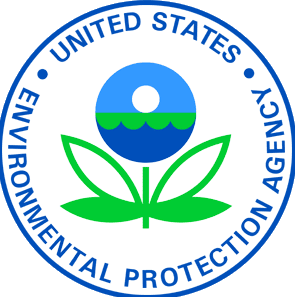 The horse isn’t dead but it’s surely taking a beating.
The horse isn’t dead but it’s surely taking a beating.
“Incomplete” and “insufficient.” A “rolling document” that challenges public review. Hazards that “have not been not fully assessed.”
These and other comments filed Wednesday by the U.S. Environmental Protection Agency express numerous concerns about the sufficiency of a draft environmental impact statement, or EIS, released in September for the controversial Mountain Valley Pipeline.
The EPA’s comments, which came from the agency’s Region III office in Philadelphia, were filed with the Federal Energy Regulatory Commission, which issued the draft statement. EPA asks FERC to consider revising the document or issuing a supplemental version — something FERC says it has never done.

FERC draft environment impact statement
The EPA contends the draft statement fails to adequately address a fundamental issue — whether the ambitious infrastructure project is even necessary: “EPA recommends that the EIS include a more thorough discussion of the purpose and need or public benefits of the project.”
As an interstate pipeline, the 303-mile Mountain Valley project, which would transport natural gas at high pressure through a 42-inch-diameter buried pipeline, needs FERC’s approval to proceed.
EPA is a “cooperating federal agency” during the project’s review. FERC is the lead agency.
Advised of EPA’s critique and suggestions for a revised draft, Tamara Young-Allen, a spokeswoman for the commission, responded via email: “FERC staff will address all concerns raised in comments, including EPA’s,” in the final environmental impact statement.
She added, “EPA, like any other commenter, may recommend a course of action. Their comments are given the same weight/consideration by FERC staff as other comments.”
Young-Allen responded similarly earlier this week in response to a host of other recent filings — by regional counties, environmental groups and others — that described the draft environmental impact as incomplete and in need of extensive revision.
FERC has said it anticipates releasing a final environmental statement for the Mountain Valley pipeline project in March. The commission’s comment period on the draft statement ends Thursday.
Mountain Valley Pipeline LLC wants to build a pipeline and compressor stations to push natural gas from Wetzel County, West Virginia, to the Transco pipeline in Pittsylvania County. As currently routed, the $3.5 billion project would enter Virginia in Giles County and pass through Montgomery, Craig, Roanoke and Franklin counties en route to the Transco pipeline.
If FERC approves the pipeline, Mountain Valley will have access to eminent domain to acquire permanent easements across private property if negotiations with property owners fail to yield a sum acceptable to all.
That reality has helped stir opposition to the pipeline project that goes beyond concerns about its potential threats to the environment and public safety.
The pipeline would pass through extensive stretches of karst terrain in the region, where the landscape is characterized by sinkholes, caves, springs, sinking streams and complex networks of underground aquifers vulnerable to contamination.
EPA quotes research that suggests the blasting that might be necessary during pipeline trench excavation could negatively affect karst habitat and the unique organisms it often supports: “Blast-induced vibrations and shock waves can cause cave roofs to crack or collapse, and karst environmental conditions can be altered by just one crack.”
The EPA warns that pipeline construction through karst landscapes could result in contamination of both groundwater and surface waters.
And the agency says the draft environmental impact statement fails to adequately spell out how landowners will be protected from or compensated for any damages to private wells.
EPA, like many others who have reviewed the draft statement since its Sept. 16 release, notes that Mountain Valley has filed reams of material with FERC in the weeks and months that have followed.
“It is not apparent within the EIS how FERC intends to include public participation and comment on these subsequent filings,” EPA observes. “Without this process clearly articulated, it appears that the EIS is a ‘rolling’ document providing just a snapshot in time.”
Young-Allen has said it has been common practice for applicants to FERC to continue to provide information past the release date of a draft environmental impact statement.
Natalie Cox, a spokeswoman for Mountain Valley, said this week that the company has been diligent about providing information to FERC. She said Mountain Valley believes the FERC review process has provided “a meaningful opportunity to review and comment on the project’s information.”
Meanwhile, EPA’s critique of the draft environmental impact statement finds fault with a host of other issues, ranging from an inadequate review of alternative pipeline routes to how the pipeline would cross or otherwise affect high-quality streams, such as Bottom Creek in Roanoke County.
The EPA also contends the draft statement fails to document the project’s cumulative contribution to greenhouse gases and impacts to water from hydraulic fracturing, a calculation the agency said ought to include the number of wells required to supply the pipeline.
Coincidentally, the Dominion Pipeline Monitoring Coalition, a group opposed to both the Mountain Valley Pipeline and the separate but similar Atlantic Coast Pipeline, released information Wednesday about past EPA critiques of FERC environmental impact statements for natural gas projects.
The coalition found numerous examples of the EPA identifying what it deemed to be significant problems with FERC environmental statements. But it also found that EPA’s comments seemed to fall on deaf ears at FERC.
It suggested EPA “has failed in its duty as a ‘watchdog’ over FERC’s implementation of the National Environmental Policy Act.”
Jeffrey Lapp, associate director for EPA’s Region III office, could not be reached for comment Wednesday.
Posted: Wednesday, December 21, 2016 10:00 pm

0 Comments